Home / BIENNIALS IN AND AROUND SOUTHEAST ASIA
Share this article:
Southeast Asia’s ascent on the global art stage in recent years has not gone unnoticed. As early as the 1980s and 1990s, institutions from Japan and Australia already recognized the vibrance and significance of art production from this region with its incredible tapestry of cultures, and made contemporary art from Southeast Asia a key focus in institutional collections and triennales such as the Fukuoka Asian Art Museum and Fukuoka Triennale, as well as Brisbane’s flagship Asia Pacific Triennial. Today, the region’s burgeoning art scenes are home to national institutions, private museums, and a proliferation of Biennales.
Just as in Europe and America, the Biennale – a large-scale, often city-wide exposition of art which originated as an event to celebrate and showcase artistic talent – has become a mainstay of the contemporary art ecosystem and experience in Southeast Asia, often yoking together a city or nation’s cultural and place-making aspirations with a desire for spectacle and the novel. This model has evolved in dynamic and interesting ways, with various approaches to the biennale and its possibilities put forward in response to each locale, shifting contexts, and / or curatorial objectives. Through the lens of contemporary art, they explore and map centuries of exchange and shared experiences, within the region as well as with historical contacts in wider regions of Asia and the Pacific. Today, Biennales offer some of the most dynamic sites to encounter contemporary art and ideas, and ART SG surveys some upcoming Biennales in the region to add to your art calendar.
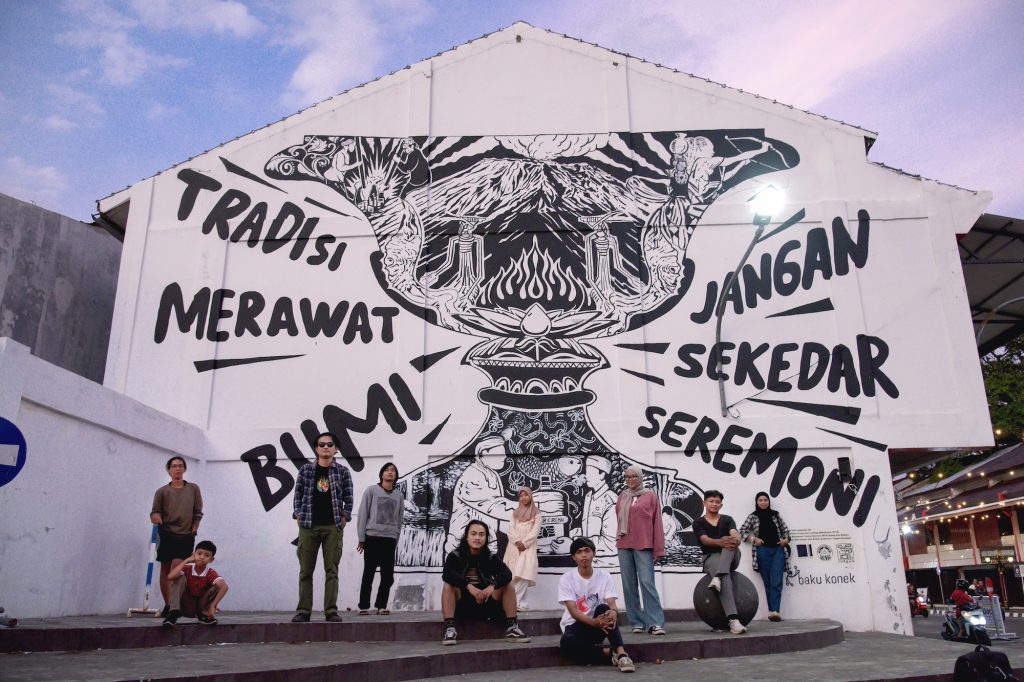
Participants in the Baku Konek artist residency programme initiated by Jakarta-based collective ruangrupa. The Baku Konek project spans different islands across Indonesia, and works from this programme will be exhibited at each locality as well as at the Jakarta Biennale.
Image courtesy Baku Konek.
The Jakarta Biennale – Southeast Asia’s oldest Biennale – opened on 1 October, and will run for 50 days to celebrate 50 years of the event since its inception in 1974. Held at a network of spaces across the city, the Biennale adopts a decentralized model, taking inspiration from the concept of a majelis (an Arabic term which translates into ‘council’ or ‘assembly’). Instead of appointing a single Artistic Director or curator, the Biennale’s programme has been initiated by various member collectives spanning creative fields such as art, music, design and photography. A similar approach characterized the 2018 Bangkok Biennial, which billed itself as an ‘alternative’ artist-led and self-organising biennale – a framework that avoids the idea of any singular or authoritative ‘voice’ or position on contemporary art and culture.
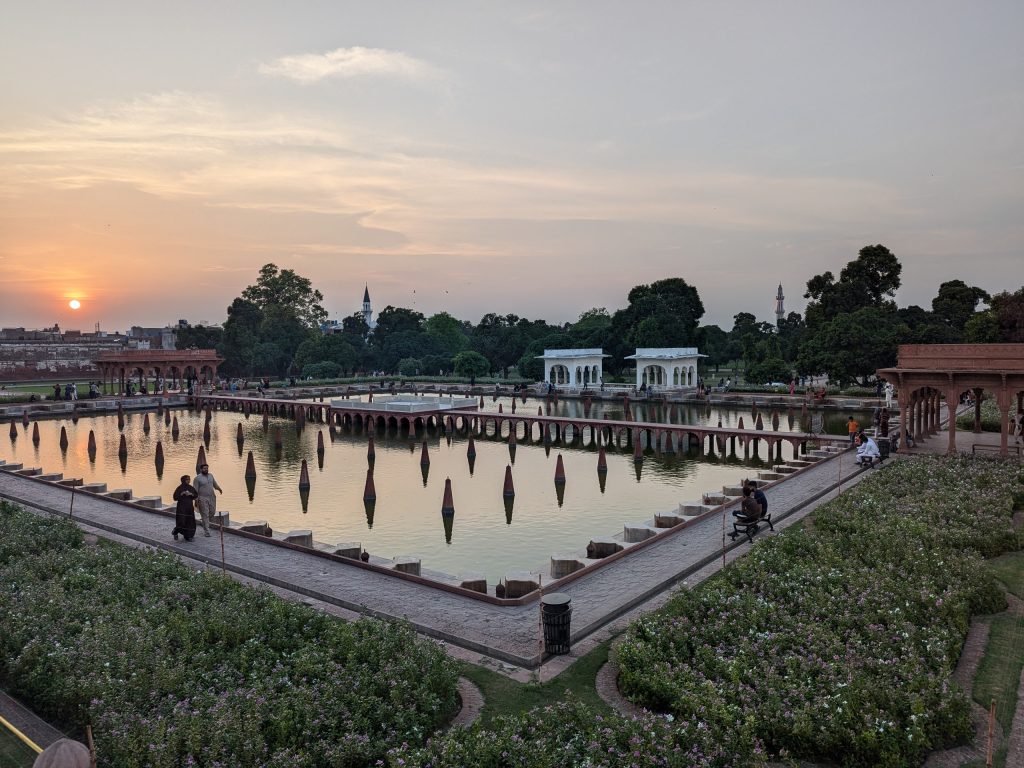
Shalimar Gardens. Image provided by Lahore Biennale Foundation.
Just a few days later on 5 October, the third Lahore Biennale opened with John Tain, at the helm. Titled Of Mountains and Seas, this edition centers on themes of ecologies and sustainable futures, and spotlights heritage sites such as the Lahore Fort and Shalimar Gardens with site-responsive artworks to bring contemporary art in dialogue with the city’s palimpsest of histories and connections to Asia and Europe.

Temple of Dawn or Wat Arun
On 24 October, the fourth edition of the Bangkok Art Biennale opens, helmed by the indefatigable Apinan Poshyananda, who works with a revolving curatorial team for each iteration. As suggested by its title Nurture Gaia, the Biennale will place an emphasis on ecological themes, as well as expand on the idea of a primordial maternal figure common across cultures to consider issues such as feminism, collectivism, and the politics of time and space. Amongst the event’s eleven city-wide venues are the perennially popular and evocative temple sites of Wat Pho (the Temple of the Reclining Buddha), Wat Arun (the Temple of Dawn) and Wat Prayoon (the Temple of Iron Fences). With the objective of spotlighting Southeast Asia’s vibrant contemporary art scene alongside familiar names on the international circuit, the Biennale’s artist roster includes Singapore artists Amanda Heng and Zul Mahmood, Lisa Reihana, Agnes Arellano, Joseph Beuys, Isaac Chong Wai, Louise Bourgeois, Supawich Weesapen, Tony Cragg, Anish Kapoor, and Elmgreen & Dragset.
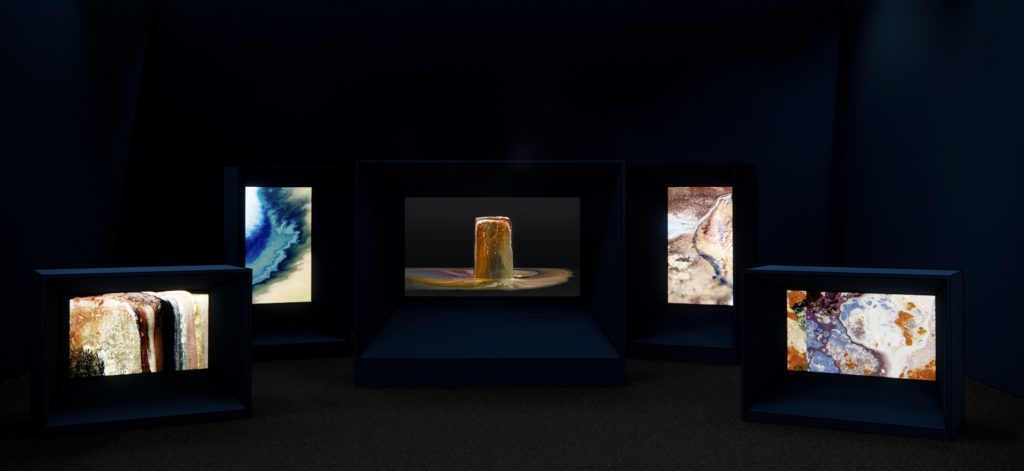
Dawn Ng, The Earth is an hourglass 2024 (installation rendering), 5-channel 4K video installation: 38:33 minutes, colour,16:9. Image courtesy: Dawn Ng Studio.
Closing out the year, the 11th Asia Pacific Triennial (APT11) opens on 30 November in Brisbane. Now in its third decade, this flagship exhibition series of the Queensland Art Gallery | Gallery of Modern Art (QAGOMA) showcases the most important developments in contemporary art across Australia, Asia and the Pacific. In 2026, QAGOMA will take this unwavering vision to Europe with an exhibition of key works acquired through the APT series to be presented at the Victoria and Albert Museum in London.
Among the highlights to look forward to at APT11 are projects by Singapore and Southeast Asian artists that, in the words of curator Reuben Keehan, reflect a “diversity of knowledge systems and modes of expression”, and offer “a palpable sense of possibility… for considering some of the profound challenges we face at this juncture”. These include a new multi-channel video installation by Dawn Ng evoking the ephemerality of time and beauty, Mit Jai Inn’s dramatic installation on the QAG Watermall that reimagines painting and its possibilities, and a large scale mural by Kikik Kollektive from Iloilo in the Philippines that reframes the province’s originary myths.
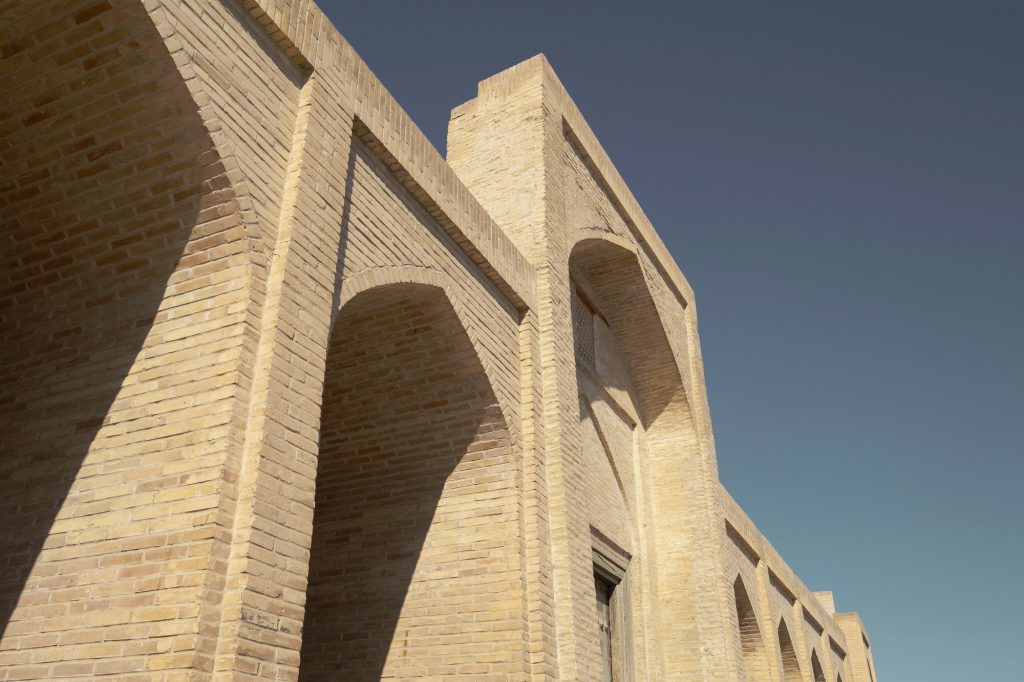
Bukhara Biennial, Caravanserai Ahmadjo. Picture courtesy ACDF, Rafal Sliwa.
Next year Uzbekistan will welcome its first Biennale, to be held in the city of Bukhara, a UNESCO Creative City of Crafts and Folk Art. Curated by Diana Campbell, the biennale’s title Recipe for Broken Hearts is inspired by a legend claiming that the staple Uzbek dish of palov was invented to mend the broken heart of a prince who could not marry his true love, the daughter of a craftsman. The interdisciplinary Bukhara Biennial will span visual, culinary and performance art, textiles, crafts, music, dance and architecture, while emphasizing the importance of shared experiences, collective healing and connection – ideas that coalesce around the metaphor of the recipe. True to this spirit, the Biennial will invite Uzbek and international chefs to showcase the craft of cooking and bring in flavours from different culinary traditions.
The Bukhara Biennial will be the first event to take place in a renewed historic district of the city. Biennial sites include Fayzulla Khodjaev House-Museum, Kalyan Minaret and the Olimjon Caravanserai, and a preliminary list of confirmed artists includes Wael Shawky, Antony Gormley, Laila Gohar and Subodh Gupta, with more details to be announced in January 2025.

Jompet Kuswidananto, Jogja Biennale in 2023, titled TITEN: Embodied Knowledges, Shifting Grounds.
Like its Jakarta counterpart, the Jogja Biennale is one of the region’s longest-running, and initially took the form of a painting exhibition. Similar to how the Jakarta Biennale evolved, the Jogja Biennale has seen a shift towards internationalization but it was arguably in 2011 with the inauguration of the Equator series that the Jogja Biennale began to carve out a distinct identity of its own. Between 2011 – 2021, the Biennale sought to dismantle the ‘international’ art map and hegemony by seeking South-South alignments. The Equator served as a conceptual framework for exploring shared histories and experiences (for instance, colonialism, landscape, climate, culture, and spiritual beliefs), as well as a platform for artists from regions not commonly profiled on the international art circuit.
The 17th Jogja Biennale in 2023 inaugurated the next phase of curatorial development, and the upcoming edition scheduled for the last quarter of 2025 will be the second in a series titled Titen. Borrowed from Javanese, Titen or Niteni refers to a sensitivity or ability to read signs from nature, for instance, the ability to read natural phenomena before a disaster occurs. Closely associated with village life, Titen is based on careful and repeated observations of nature, and its choice as a title underlines the Biennale’s curatorial aims in decolonizing knowledge production and connecting deeply with vernacular wisdom and the local. Led by Alia Swastika, the Director of the Yogyakarta Biennale Foundation, the curatorial team of the Jogja Biennale will explore keywords such as collectivity, diversity, kinship, rural sociology, food politics, textiles as holders of history, peripheral spaces, non-linear time, women’s voices and storytelling as new agency.
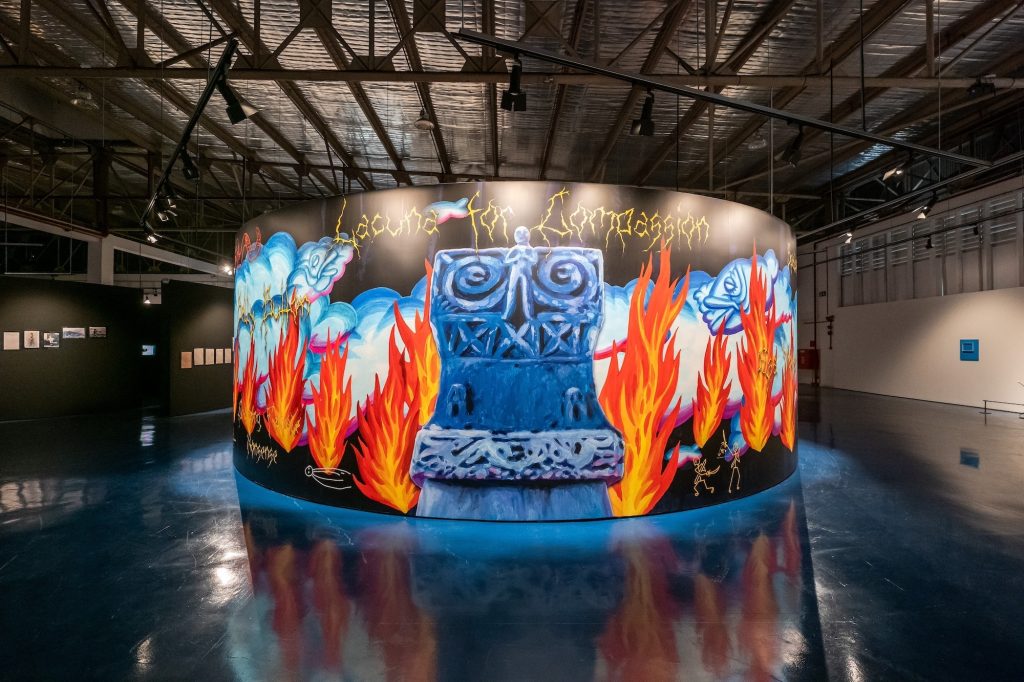
Installation view of Natasha Tontey’s Garden Amidst the Flame; Lacuna for Compassion (2022), as part of Singapore Biennale 2022 named Natasha. Image courtesy of Singapore Art Museum.
The Singapore Biennale will make a comeback in 2025, and is set to run from 31 October 2025 – 29 March 2026, with more information to be released early next year. Also opening in 2025 is the fourth edition of the nomadic Thailand Biennale, this time set to take place on the island of Phuket from November 2025 to April 2026. The Biennale’s curatorial team comprises artist Arin Rungjang and art critic David Teh as Artistic Directors, along with curators Hera Chan (from Tate Modern) and curator-lecturer Marisa Phandharakrajadej. Invoking the notion of cosmic time with its theme of Eternal [Kalpa], the Biennale will communicate the relationship between humanity, nature and time, in the context of the urgencies and challenges of our era such as ecological degradation, war, threats from technology and the heavy exploitation of the natural world.
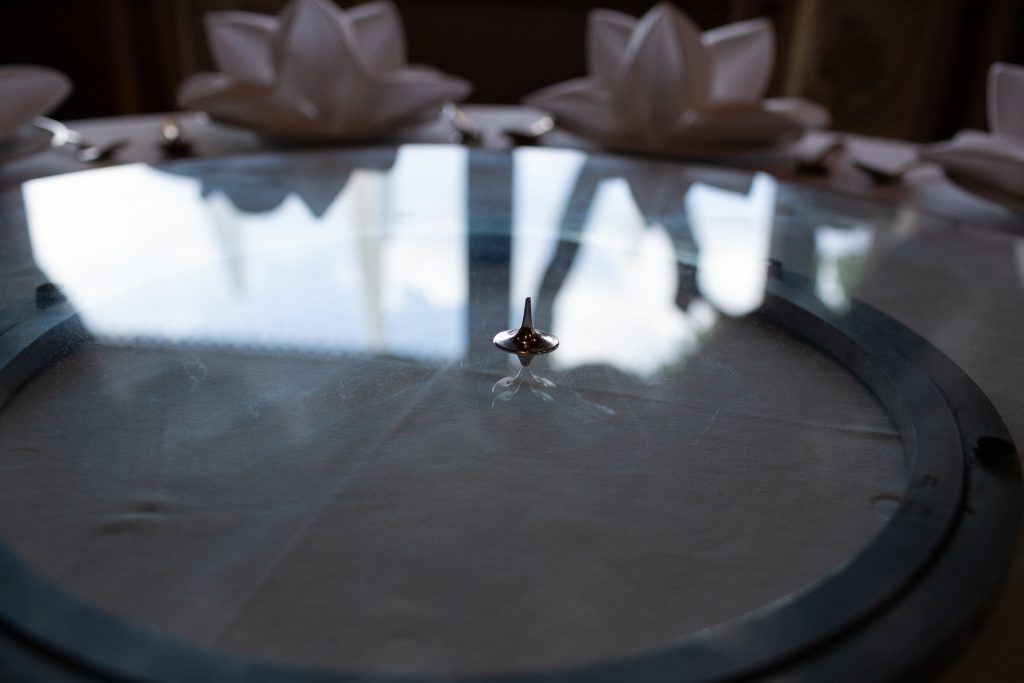
Koki Tanaka, Eating an Apple While Lucid Dreaming, 2022, Ghost 2565: Live Without Dead Time, Bangkok. Photo by Koki Tanaka. Courtesy the artist.
A short flight away in the city of Bangkok, Ghost — the new media and performance art series initiated by artist Korakrit Arunanondchai and gallerist Op Sudasna — will return for its third edition. Previous editions have most memorably activated spaces around the city including disused buildings in Bangkok’s historical centre, to explore Bangkok as a phantasmagorial city and palimpsest. Ghost 2568 will run from 15 October – 16 November 2025, with Amal Khalaf as curator, and Korakrit Arunanondchai and Christina Li as guest curators.
Collectively, these events offer multiple avenues of experiencing and encountering contemporary art and their host cities. Located in and around Southeast Asia and drawing inspiration and energy from their localities, they make a compelling case for considering practices and narratives beyond the international circuit, and modes of shaping contemporary art and culture that extend beyond institutional or gallery walls.
ABOUT THE AUTHOR: TAN SIULI
Tan Siuli is an independent curator with over a decade of experience encompassing the research, presentation and commissioning of contemporary art from Southeast Asia. Major exhibition projects include two editions of the Singapore Biennale (2013 and 2016), inter-institutional traveling exhibitions, as well as mentoring and commissioning platforms such as the President’s Young Talents exhibition series. She has also lectured on Museum-based learning and Southeast Asian art history at institutes of higher learning in Singapore. Her recent speaking engagements include presentations on Southeast Asian contemporary art at Frieze Academy London and Bloomberg’s Brilliant Ideas series.

Share this article: